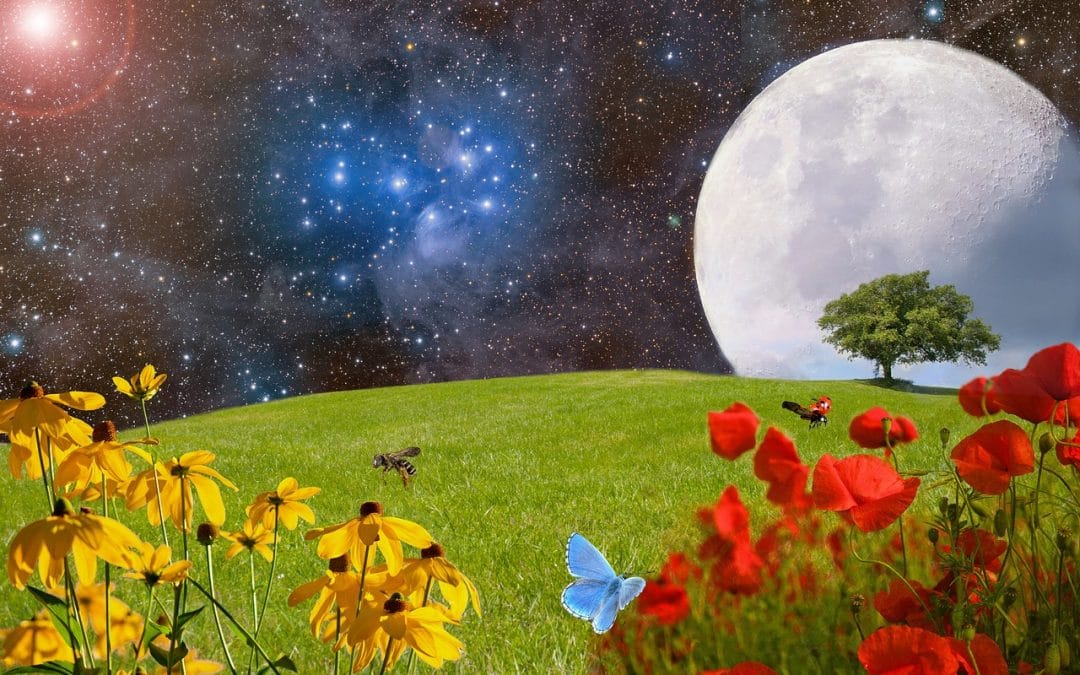
by Somya Devi | Mar 20, 2019 | Astrology, Conjunctions, Events, Holy Days, Planets Changing Signs
The Moon will be reaching peak waxing this cycle at 6:43 pm PDT tonight, March 20th, just before rising across from the setting Pisces Sun. This Full Moon brings with it the Hindu Holiday Holi, a joyful celebration of spring and renewal. We have a rare occurrence this year where the Holi full Moon actually coincides with the spring equinox (today!), rather than preceding it. This is a powerful setup for harnessing auspicious energy as we move into the new season and cycle of life.
Virgo Full Moon
Virgo is actually a sign of the maiden related to springtime as well, and with the full Moon here we may feel connected to the feminine earth energy more than usual. The Sun is opposite in Pisces, connecting our spirit to the dreamworld and helping us to envision our soul’s highest and most imaginative creative potential. With the Moon opposite and fully illuminated by this light in Virgo, we have the opportunity to take those dreams and visions and ground them into the earth plane. This is a potent time for planting seeds of manifestation, drawing the ethereal into the material world.
With Virgo’s ruler, Mercury, retrograde until March 28th, and Pisces’ ruler Jupiter in gandanta (see below), you may feel a little resistance or hesitation in harnessing this power. Take the opportunity to go inward and have some quiet time to tap into these energies, even though it is a celebratory full Moon.
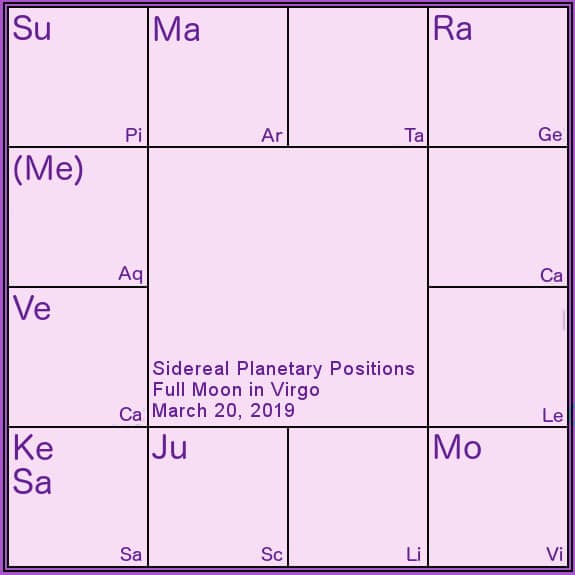
Uttara Phalguni
Within Virgo this full Moon aligns with Uttara Phalguni nakshatra, the “latter reddish one” or the “latter fig tree,” images which also evoke the fertility associated with Virgo. This is a balanced nakshatra, ruled by Aryaman, a god of leadership and nobility, and associated with the purifying power of the Sun. Its animal symbol is the bull (the male cow), an auspicious image in Indian culture, also related to abundance and fertility. This nakshatra brings auspicious energy for marriage and romance, as well as ceremonies and new beginnings.
 Holi
Holi
Holi is one of the most joyful Hindu holidays, and marks a time for new beginnings as well. During this “festival of colors,” one of the main traditions is to throw powdered colors at each other, in sport, but also as a symbolic way of getting out any latent grievances or stuck energy from the past. When we do this in fun and frolic, it is a way to forgive and forget and begin the new season with joy and a fresh slate.
Spring Equinox & Renewal
Timed near the spring equinox, this holiday also relates very much to the blossoming of life that is coming now that winter is over and the spring season is upon us. There is a very powerful potential in this time of year, as the energies of day and night are equal, all over the earth, and the Sun is passing from the southern ecliptic onto the northern. Now is the time to take the seeds of your Piscean dreams, and plant them in the fertile soil of this Holi Equinox Virgo Full Moon!
Jupiter in Gandanta
A few words of caution, unfortunately. Jupiter has recently moved into the last muhurta of sidereal Scorpio, rendering him in gandanta, a difficult karmic knot. Jupiter will remain in gandanta until May 6th. He will transit into Sagittarius briefly on March 28th, before stationing and beginning retrograde motion on April 10th. He will only reach 0°14′ of Sagittarius, however, meaning he remains in gandanta through this entire transit. After he retrogrades back into Scorpio on April 22nd,, he will leave this difficult zone on May 6th. This is quite a long stretch for Jupiter to remain in gandanta, as he usually passes this area within a few days. This could cause some stuck feelings for those who are ruled by Jupiter, and for those areas in your life that Jupiter rules.
Personal readings are available to help you understand how the current transits may affect you.
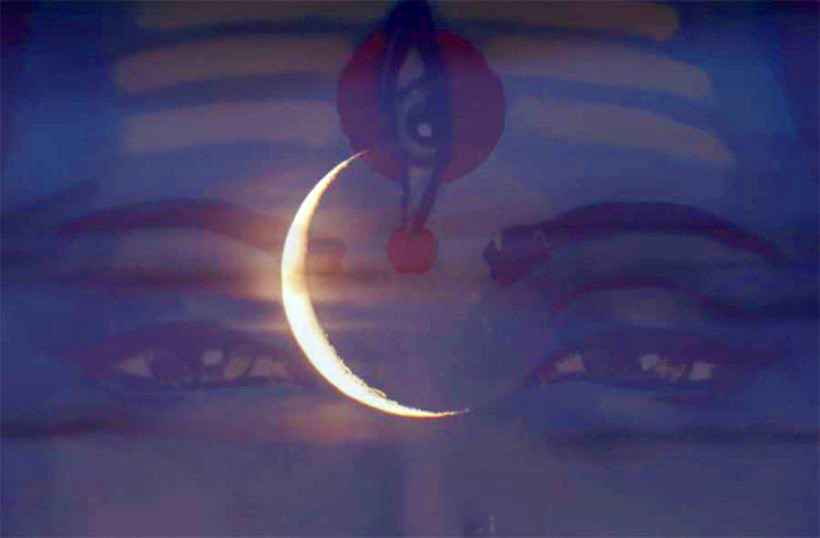
by Somya Devi | Feb 28, 2019 | Astrology, Conjunctions, Holy Days, Planets Changing Signs, Retrograde
The Moon wanes in sidereal Aquarius on the dark night of March 5th, approaching the exact Sun-Moon alignment for a New Moon at 8:04 am on Wednesday, March 6th, beginning a new lunar cycle. Leading up to this will be Maha Shivaratri, “the great night of Lord Shiva,” on March 4th. This is an auspicious night for prayer and penance, and the benefits of sadhana are multiplied by the Moon’s position and the collective vibration.
Maha Shivaratri
Monday night, March 4th, the night prior to the Dark Moon night, is the fourteenth waning phase of the lunar cycle. During this month this night is celebrated as Maha Shivaratri. This is perhaps the most auspicious night of the year for doing sadhana (spiritual practice). It is traditional on this night to stay up all night fasting, chanting, praying, and meditating. This holiday honors Lord Shiva, the great ascetic, and we can recall two stories of great sacrifices that he made protect the entire creation.
One of these is the story of the churning of the milk ocean, which the gods and demons were doing in order to release the nectar of immortality. Before the nectar came up, however, a poison came up first. (This is similar to when we do spiritual practice and begin our path of self-inquiry, and negative tendencies often come to light first, which can be a painful experience. Similarly, during a physical fast or cleanse, toxins can be shaken loose and released first, causing a healing crisis before we continue healing into a freer, happier state of being.) When the poison came up from the milk ocean, Lord Shiva consumed it so that it would not engulf humanity, as a great and noble sacrifice. His wife, Parvati, however, held his throat so that he could not ingest it, thus saving him from being harmed by the poison.
Maha Shivaratri also commemorates the wedding of Shiva and Parvati, which also stemmed from great sacrifice made for the benefit of all humanity. It was said that after his first wife, Sati, perished, Shiva was fully devoted only to his sadhana, meditating for aeons in isolation and renouncing the world. Then the demon Tarakasura began running amock on earth, threatening all of humanity. Brahma foretold that only Shiva’s child could defeat Tarakasura, so the gods devised a plan for Sati to reincarnate as Parvati, and win over her Lord to marriage once again. He was not easily swayed, however, and it was only after Parvati became an ascetic and underwent great penance that he agreed to marry. They eventually produced their son Kartikkeya, who went on to slay the demon.
Thus, this holiday is celebrated through the penance of fasting, forgoing food, water, and sleep, for one night, and simultaneously celebrating the union of Lord Shiva and Parvati, or the masculine and feminine energies of creation, that allows this dance of life to continue. It is an apt time to feel the forces of Aquarius upon us, which compel us to consider our role in society, and in the universe, and what personal sacrifices we can make for the greater good. Even if you’re not able to stay up the whole night, any amount of devotional practice, serviceful sacrifice, or chanting of Om Namah Shivaya on this night can have beneficial affects that are magnified greater than on any other night.
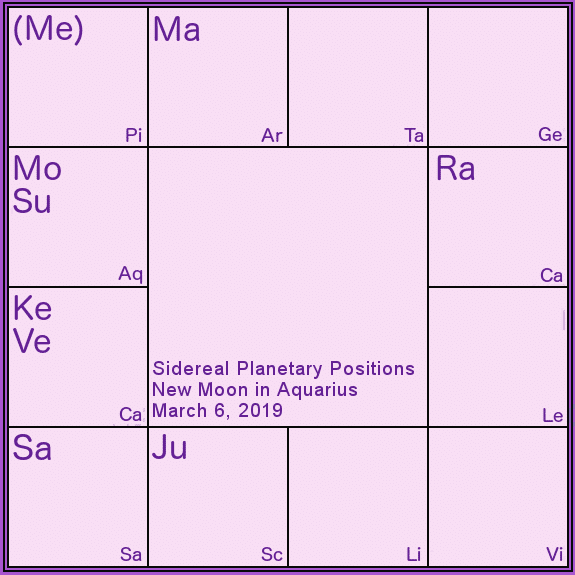
Aquarius Moon Cycle
The Sun and Moon meet in sidereal Aquarius to begin this lunar cycle. Aquarius is known as Kumbha in Sanskrit, a word for “pitcher” or “vessel.” According to the Vedic texts, the sign Kumbha can be imagined as a man holding a pot, with deep-brown skin, standing in the water. We can see this Aquarian imagery in the sadhus of India (and its biggest ritual pilgrimage day, the Kumbha Mela), who make their lives an offering of service to society through their prayers and Saturnian austerities, while renouncing the individual self. In the Aquarius cycle, we think about how we can serve the whole.
Saturn both rules Aquarius and is aspecting the Sun and Moon here (from sidereal Sagittarius) at the time of this New Moon. Saturn brings to us awareness of the long term and the bigger picture, and through this masculine or active sign, compels us to make commitments and offerings to something greater than ourselves and our momentary happiness. This is a great month to consider a new way that you may be of service to your community or to society.
Purva Bhadrapada
The New Moon cycle begins with the Sun and Moon in the Vedic nakshatra called Purva Bhadrapada, the former “lucky footed one.” This nakshatra bridges Aquarius and Pisces and is often represented by a funeral cot, symbolizing the transition from life into death, or ultimate liberation. It is ruled by Aja Epakada, the one-footed goat who is often associated with the image of Lord Shiva as Nataraj dancing on one foot, a fitting image for Maha Shivaratri.
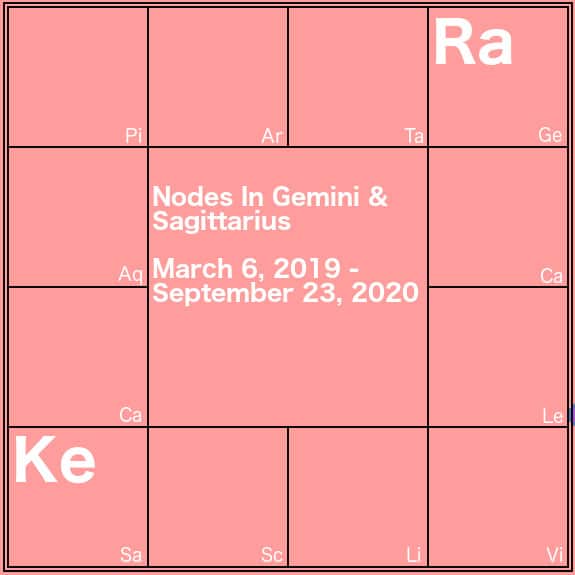 Nodes Are Changing Signs!
Nodes Are Changing Signs!
With a mean node calculation, Rahu and Ketu will transit into Gemini-Sagittarius on March 6th. (Under a true node calculation, they will not change signs until March 23rd; See Technicalities: Mean vs. True Node section below if you want a little more info about nodal calculations.) Regardless of the calculation used, March is a month of transition for the nodal energy. With the nodes in Cancer-Capricorn for the last year-and-a-half, we collectively felt a dichotomy between listening to the heart and following our emotions, against doing what is practical and responsible in an earthly way. It was a chance to balance these two things as well, learning to create a harmony between the practical and the emotional.
Throughout the coming transit of Rahu and Ketu through Gemini and Sagittarius, we will be feeling a polarization between curiosity, fact-finding and learning in an intellectual way, versus taking actions based on our principles and beliefs. Sometimes the intellectual mind does not agree with our fiery passions. This transit will be a time to learn to balance the two. With opinionated Sagittarius on one side, and communicative yet flexible Gemini on the other side, we may learn new ways to communicate and interact with those who oppose us in ideas, stepping into another’s shoes while still maintaining and honoring our personal beliefs and philosophy.
For each natal rising sign, this coming transit will affect a particular axis of learning in your life. You will be more able to see and work with some of your blind spots in these areas throughout the coming year-and-a-half long nodal transit. These things will especially surface around the bi-annual pairs of eclipses (coming this year in July and December).
Mercury Retrograde
Mercury stations and begins apparent retrograde motion on March 5th, the day before the New Moon. He is also currently debilitated in sidereal Pisces, so this time period could have us a bit mixed up around some details, and possibly challenged with communication and accuracy. He’ll retrograde back into Aquarius on March 14th, before returning to direct motion on the 28th.
Jupiter Gandanta
Also during the first half of this lunar cycle, Jupiter will enter the last 48 minutes of sidereal Scorpio (one muhurta), on March 15th. This region of the sky, called gandanta or a “knot,” is considered one of the most difficult places in the zodiac. It spans for one muhurta before and after the 0° point between sidereal Scorpio and Sagittarius, as well as those regions on the cusp of Cancer-Leo and Pisces-Aries (however, this gandanta location is often considered the most difficult. (Some astrologers may consider it spanning up to one or even two or three degrees to either side of the cusps.)
Normally, a planet transits through this zone rather quickly. Jupiter is currently slowing down, however, and will come to a stationary halt at 0°14’ of sidereal Sagittarius on April 10th, before beginning retrograde motion and passing back into Scorpio. He will threrefore be traveling the gandanta zone all the way from March 15th until May 6th (or longer if the zone is interpreted as wider).
Though Jupiter will be dipping into his own sign from March 15th through April 22nd, the fact that he will remain in gandanta at this time will not bring the added strength that we would expect from a sva graha. Those who are ruled by Jupiter may feel a bit “stuck” in various ways throughout this transit. It is important to be patient and keep up with sadhana during this time. Additionally, he will be joined by both Saturn and Ketu during his time in Sagittarius, both of which can be challenging companions.
Technicalities: Mean vs. True Node
Rahu and Ketu have been transiting through the Cancer-Capricorn axis for nearly 18 months, and are getting ready to make their transition into the Gemini-Sagittarius axis, for the next 18. The date of this transition will vary whether you are using the “mean node” calculation or the “true node” calculation. To simplify this as much as possible, we must realize that the nodes do not have planetary bodies that can be observed as the other grahas can be. (The grahas are “the forces that grab us,” including the Sun, Moon, Mars, Mercury, Jupiter, Venus, Saturn, Rahu and Ketu.)
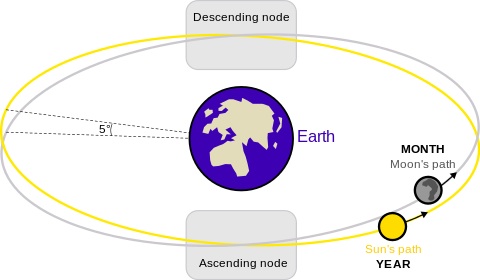 The nodes, astronomically are the places where the Sun’s and Moon’s paths intersect. The ecliptic is the apparent paths that the Sun travels “around” the Earth. The Moon’s orbits is not completely flat or parallel with the Sun’s, but slightly inclined, so that it passes this line and is sometimes to the north of it, sometimes to the south. We can measure astronomically and by observation when these crossings happen. To get the mean node, we take an average distance between these two points based on how many days it takes the Moon to get from one to the other. The true node is calculated using a method that also accounts for the slight wobble of the earth and the Moon’s orbit around it.
The nodes, astronomically are the places where the Sun’s and Moon’s paths intersect. The ecliptic is the apparent paths that the Sun travels “around” the Earth. The Moon’s orbits is not completely flat or parallel with the Sun’s, but slightly inclined, so that it passes this line and is sometimes to the north of it, sometimes to the south. We can measure astronomically and by observation when these crossings happen. To get the mean node, we take an average distance between these two points based on how many days it takes the Moon to get from one to the other. The true node is calculated using a method that also accounts for the slight wobble of the earth and the Moon’s orbit around it.
Some astrologers favor using the “mean” node calculation while others prefer the “true.” These two calculations of the node will sometimes put them about one degree apart, which is noticeable in cases where, in a natal chart, someone’s node is on the cusp of two signs (it may be in one sign using mean node and another sign using true node). It also affects the date of transition between signs that we observe when talking about nodal transits. In both cases, it is best to observe for yourself (use a lot of charts for case studies) and see which makes the most sense to you. I prefer using mean node calculation.
Personal Readings are available to help you understand your individual natal chart and how these transits will affect your upcoming year.

by Somya Devi | Nov 5, 2018 | Astrology, Conjunctions, Holy Days, Planets Changing Signs, Retrograde, Uncategorized
The Moon is waning towards total darkness as he approaches the Sun in late sidereal Libra. The dark Moon night of November 6th will precede the “new Moon” moment at 9:02 am PST on Wednesday, November 7th, when Sun and Moon align exactly in late Libra, in Vishakha nakshatra. This will begin a lunar cycle in the mood of Libra, and also bring in Diwali, the Hindu festival of lights. With Venus already powerful in the sky right now, this lunar cycle will cause us to focus even deeper on relationships, harmony, and happiness in our lives, and examine closely how we seek to fulfill our desires and find love on the human plane.
Libra
Libra is called Tula in Sanskrit meaning “scale” and is depicted as such in both eastern and western astrology. The natural seventh sign, opposite Aries, Libra is where we recognize our reflections, seeing the other who is opposite to us, and learning how to travel through life balancing our individual instincts with our need to create harmonize with those around us, often people with opposite will or nature.
Venus is the ruler of Libra, and Venus governs the human nature within us that seeks pleasure and happiness. While Mars gives us an instinct to assert ourselves strongly and survive, Venus brings in awareness of our pleasure centers and what is sensually pleasing in our field or bodies. A large part of the happiness we seek comes in the form of other people, coinciding with Libra’s “seventh sign” placement.
The problem with other people, however, is that they don’t always want exactly what we want. If it is a loved one, family member, or someone with whom we need to deal on a regular basis, we begin to notice that if we meet our individual desires completely at the expense of their happiness, we won’t actually be happy in the end. We need to learn how to compromise some so that both parties will be happy enough with a situation (and this is easier said than done). The flip-side is when we over-compromise, putting another’s desires entirely before our own, and ending up just as miserable as if we had completely ignored theirs.
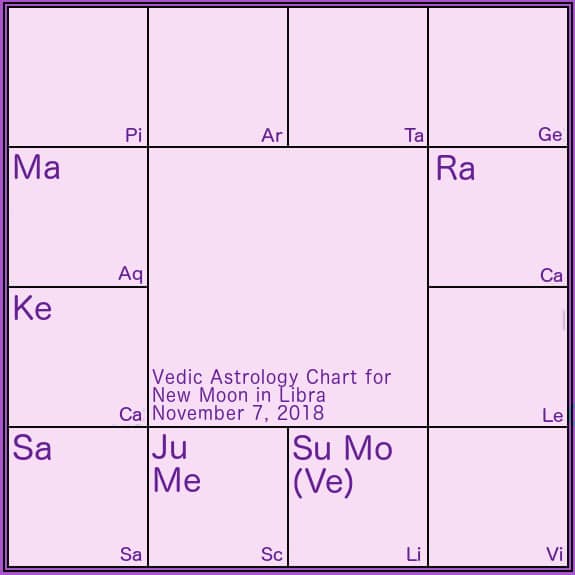
Venus
During this Libra cycle, Libra’s lord, Venus, is joining the Sun and Moon from the onset. He is strong as he travels through his own sign (sva), and even stronger due to his retrograde position (albeit only visible for a short time in the morning currently, since he is traveling so closely to the Sun). This position will give us extra support as we try to navigate the waters of compromise, and insight to be able to reflect back on what we are doing to try to attain happiness. It will help us to see what isn’t working, and gives us the opportunity to try to forge a new path moving forward.
It’s important to look at our own part in conflict and disharmony, and adopt a new attitude or method towards finding happiness and harmony. Venus comes to a halt and turns direct on the 15th, so be sure to take notice of all the insights being offered now and make your plan for how you will move forward.
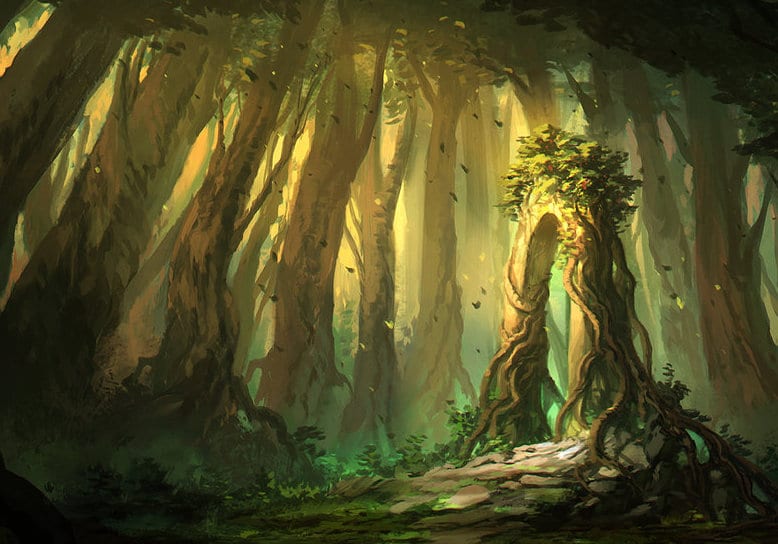 Vishakha
Vishakha
The Sun and Moon are coming together at 21° sidereal Libra for this New Moon, which aligns with the Vedic star-sign known as Vishakha, “the forked branches.” This star is sometimes represented by a set of forked branches, but often as a triumphal archway, indicating that success is possible after doing the difficult work of deciding between two paths. This is even often interpreted as a marriage archway. This star is ruled by the deities Indra and Agni, the chief of the gods and the fire deity, respectively, and can give us quite a bit of power and determination. Under Jupiter’s influence, this nakshatra can be helpful in learning to overcome conflicts and refining our method of compromise and success. Be aware, however, there can be some self-righteousness here due to Jupiter’s and Indra’s influences.
Sun
The Sun is considered neecha or naturally debilitated as he travels through Libra. Since the Sun relates to our sense of strength and vitality, and Libra is the sign of compromising (or over-compromising) with others, it is natural that our individual power can sometimes feel lessened while we elevate the level of energy and attention we give to those around us. Caring for others doesn’t necessarily translate to depleted health, but it can when we overemphasize the outer world and others to the point of neglecting our own self-care. This is a very important time of year to nourish ourselves, and our inner light, as the outer light is descending. Venus’ coincidence in Libra can help us to navigate this balancing act.
Diwali
Hindu culture recognizes this descending light outside, and it is on this New Moon (in the Hindu month of Ashwin) that we celebrate Diwali, the festival of lights. It is a time to invite more light into our lives, our hearts, and our world. This festival celebrates the symbolic victory of light over darkness. At this time we commemorate Lord Ram’s and Sita’s return from exile after fourteen years (story from the Ramayana). Lord Ram embodies the highest qualities of dharma, devotion, compassion, courage, and leadership. It is also a powerful time to connect to the Goddess Lakshmi, calling in her blessings for both material and spiritual prosperity.
Diwali (also seen as Divali, Deepawali or Deepavali) comes from the Sanskrit words deepa (light) and avali (row). It is traditional to light candles throughout Diwali, inviting the highest light into our homes and hearts. The candles are lit to remind us of the inner divine light in us all. Though one flame can be used to light many others, it is not diminished by sharing its power of illumination. We can pray for the peace and happiness of all beings, and each one’s awareness of their inner light.
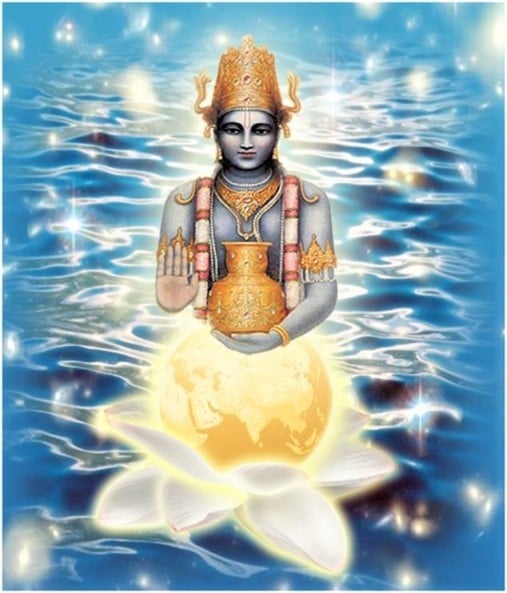 Dhanteras
Dhanteras
Monday, November 5th precedes Diwali with the holiday known as Dhanteras or Dhanvantari Tryodashi (commemorating the birth of Lord Dhanvantari). It is the thirteenth day of the waning Moon in the Vedic month of Ashwin. Lord Dhanvantari is known as the “father of Ayurveda” and the “physician of the Gods.” (Ayurveda is the system of natural medicine from India that is a sister science to yoga and Jyotish.) If you practice any healing tradition, especially Ayurveda, this is a good day to give thanks and call in auspicious blessings to your healing path or practice.
This day also marks Dhanteras, the first day of the Diwali festival. It commemorates the day that Lakshmi emerged from the milk ocean in Vedic lore. In India, it is customary to purchase metals on this day — anything from jewelry to new statues to kitchenware (excluding iron), especially silver and gold — as a part of celebrating Lakshmi and calling in more prosperity. The metals can then be offered to your altar and will absorb and amplify the benefits of worship performed over the few days of Diwali.
Mars-Ketu Separation
After six long months of conjunction in sidereal Capricorn, Mars and Ketu are finally separating. On November 5th Mars leaves Capricorn and crosses over into Aquarius. This has been a complicated transit, as Mars journeyed through his sign of exaltation, strengthening our courage and will, but was simultaneously plagued by Ketu’s fear and confusion.
With a retrograde stint topped with a set of three eclipses in the summer, we had a lot of time to try to understand our deepest fears and how they influence our courage and will (especially in areas of your life ruled by Mars or aligned with Capricorn). Moving forward, we will feel some of the pressure lift from these areas, and hopefully we were able to glean a lot of learning from the visible shadows presented throughout this transit.
Personal readings are available here to help you to better understand your relationship with each planet and how the current transits may affect you.
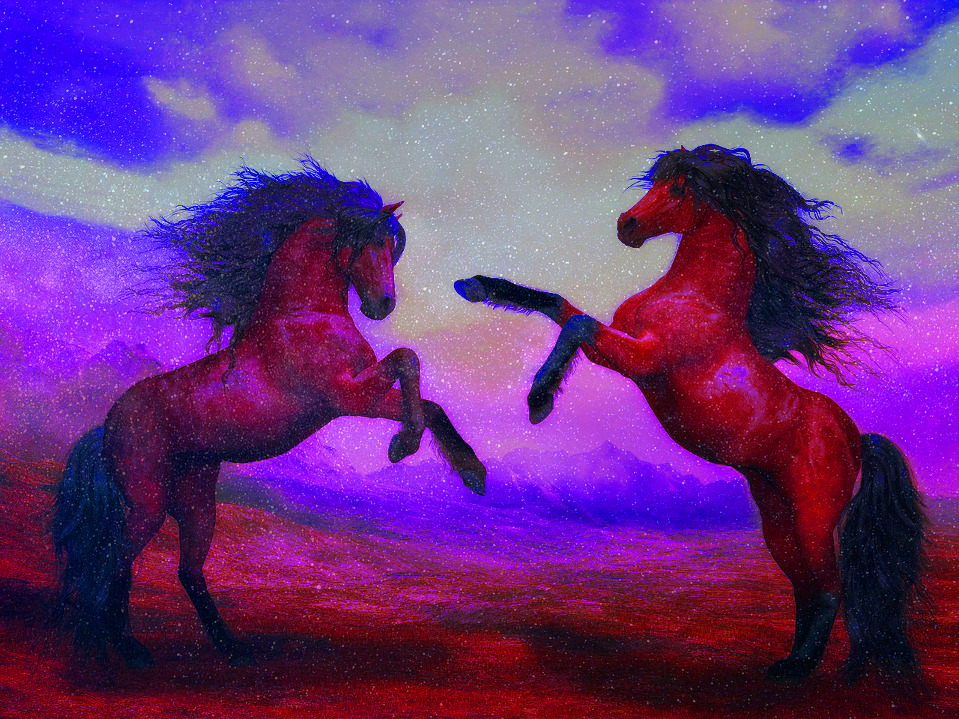
by Somya Devi | Apr 12, 2018 | Astrology, Conjunctions, Holy Days, Retrograde
The Moon and the Sun align again this Sunday, April 15th at 6:57 pm PDT, in the early degrees of sidereal Aries. They join in the Vedic nakshatra called Ashwini to begin this lunar cycle, the first of the 27 Vedic signs just as Aries is the first of the 12 major zodiac constellations. This new Moon night is the perfect time for planting the seeds of what you want to grow in the coming months.
Aries Cycle
Aries is naturally a place of beginnings, a fire sign ruled by the energetic Mars, who helps us to move towards what we need to survive. With Venus also in Aries this week, this new Moon will compel us to really go for our desires, using Mars’ strength to bring what we want into being. We are likely to feel more physically strong this month, as Sun transits Aries, his sign of exaltation. As the Sun relates to purification, this is also a great time to purify ourselves, physically, mentally and spiritually. Starting a new exercise regime, sadhana (spiritual practice), or cleanse is likely to have more traction if you begin it this week. Choose your actions wisely, as the direction we move under the new Moon of the Ram has a powerful momentum and can be difficult to change.
Ashwini Nakshatra
The new activities we begin have an added power due to the Sun and Moon’s positions within Aries, as they align with the nakshatra Ashwini at the beginning of this cycle. Three Vedic nakshatras (star-signs) bridge the larger sign of Aries: Ashwini, Bharani, and part of Krittika. Ashwini being the first of all 27 nakshatras, there is the most momentum here for new ventures. Furthermore, Ashwini is known as “the horsewoman,” is ruled by the Ashwini Kumaras, the horse-headed twins of Vedic mythology. They bring a strong horsepower to any planets or activities influenced by this nakshatra. They are known as the physicians of the gods, and carry a potent healing energy as well.
Akshaya Tritiya – Day of Abundance
Three days after the new Moon in Aries, we come upon a special day of the year known as Akshaya Tritiya, on April 18th. On the third waxing lunar day (the tritiya phase) of the Aries cycle, the Moon transits Rohini, within Taurus, his placement of exaltation. With both the Sun and the Moon exalted at the same time, a portal of abundance is opened. Across India and the Hindu world this is seen as an auspicious day for new beginnings, marriages, and investments of all kinds, especially in gold or golden items. Akshaya refers to the idea of never-diminishing prosperity, so investments made on this day are expected to have great returns.
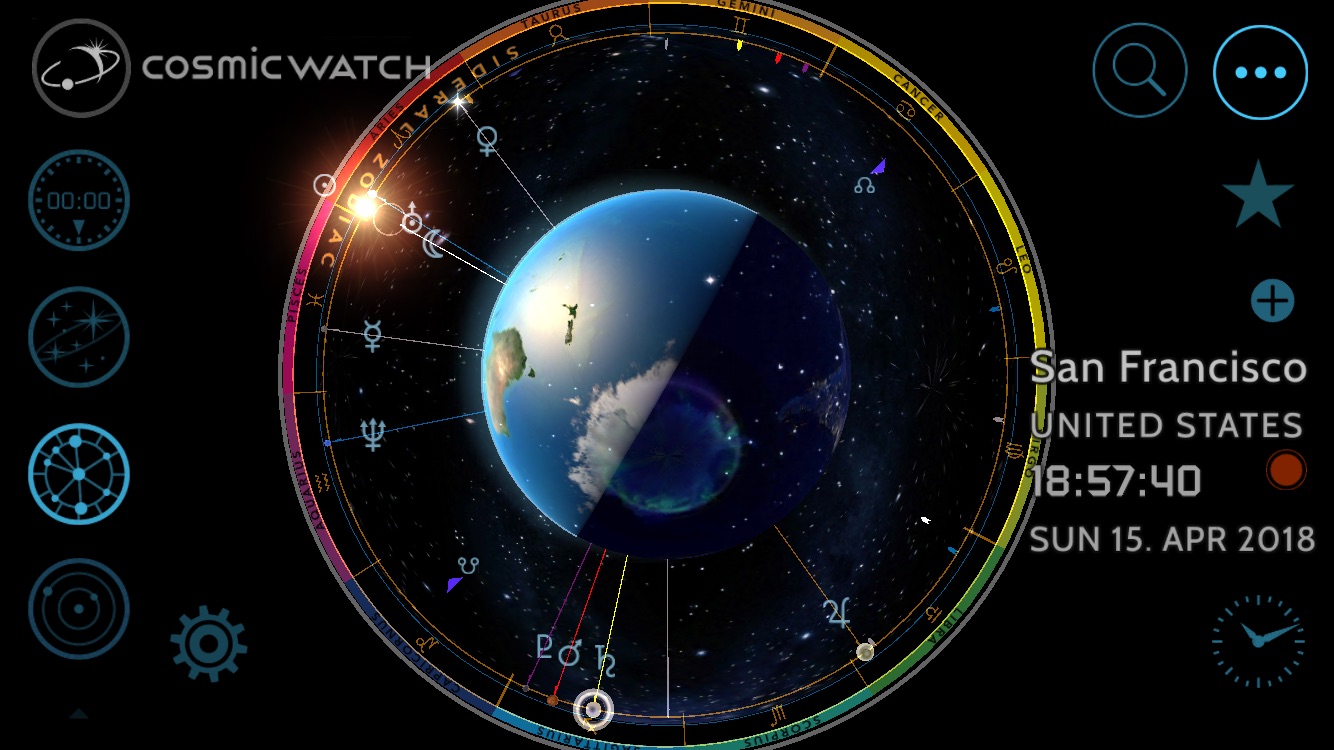
Jupiter’s Grace
Jupiter adds some grace to activities we begin on or around this new Moon, as he gazes at the Sun-Moon-Venus conjunction from nearly directly across the sky, in sidereal Libra. Jupiter is powerful at this time, and could be considered a “full Jupiter.” He is in retrograde motion, nearly as close to the earth as he gets, and he is on the opposite side of the Earth from the Sun, so is incredibly bright in the sky (just as the Moon is brightest and “full” when he is directly opposite the Sun from earth). Jupiter brings the power of inspiration, grace, luck, and expansion, so even though he is retrograde, his proximity to earth and his brightness will add these qualities to the endeavors we undertake at this time.
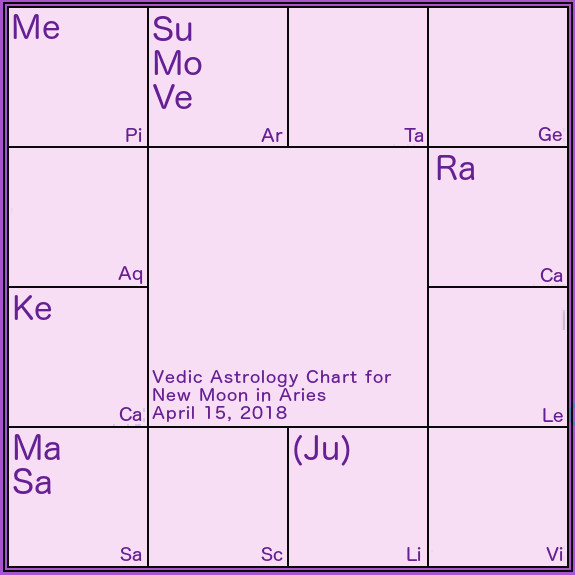
Mercury, Mars & Saturn
Mercury appears more-or-less stationary at the time of this new Moon, having just turned from retrograde to stationary direct in the early morning of April 15th. He also continues to transit Pisces, his sign of debilitation, but without the elevating presence of Venus that was there some weeks ago, so issues of communication and mental acuity could be a bit murky at the moment.
Mars and Saturn continue their conjunction in the sign of sidereal Sagittarius, but as Mars is now moving away from Saturn there is less hostility than in their war of two weeks ago. You may still feel immediate urges at-odds with your long-term goals, or a conflict between the things ruled by Mars and Saturn in your natal chart. The two will no longer be sharing a sign once Mars moves on into Capricorn (his sign of exaltation) on May 2nd, where he’ll transit for a whopping six months. Look for my Mars-in-Capricorn forecast to see how this could affect you (you can join my free mailing list here).
In honor of Akshaya Tritiya, I’m offering 20% off natal chart readings from now through the 19th! Use coupon code AKSHAYA at checkout.

by Somya Devi | Mar 29, 2018 | Astrology, Conjunctions, Holy Days, Retrograde
The Moon waxes toward fullness with the Full Moon in Virgo this Friday night, with the Moon coming fully opposite the Sun on March 31st, at 5:37 am PST. The full Moon culminates at 16° sidereal Virgo. There’s a screenshot below from an astronomy app to show you where you can identify the Moon this Friday night into Saturday morning. This part of the ecliptic is associated with the Vedic nakshatra called Hasta, the hand, which can be identified around the constellation Corvus, just below Virgo.
 Full Moon in Virgo
Full Moon in Virgo
We began this lunar cycle with Sun and Moon together in Pisces, driving our consciousness towards its deep waters, fishing out the dreams that lay buried, as we vision what is most important to us in the coming months. With the Moon now opposite Pisces, in Virgo, we can bring our consciousness out of the ethers and more fully into our bodies, as the Moon is illuminated in this grounded earth sign. Both Virgo and Pisces are dual-nature signs, providing the flexibility for us to shift things around when necessary, and to root down and stay put when there is work to be done.
The fertile, feminine earth sign of Virgo is a perfect place to plant the seeds of our lives for the coming season. Virgo draws our focus and attention to what work we can do in the material plane, helping us to look at the details that we will need to manage in order to fulfill the hopes and dreams that have arisen. Ruled by Mercury, the planet of the intellect, Virgo’s full Moon assists in analyzing what it will take to bring our inspiration into manifested form.
Hasta
The Vedic nakshatra where this Full Moon lies is especially handy in guiding us on how to craft our dreams into realities. Hasta, known as “the hand,” correlates with the middle degrees of Virgo, and symbolizes all that we do with our hands, or our handiness. There is a power here for creating, and any skill that takes a certain amount of dexterity, whether physical or mental. Under this full Moon, call on the power of the divine hands to enter you and help you to mold your creations into being.
 Saturn-Mars War
Saturn-Mars War
Just hours after this full Moon, Mars approaches Saturn so closely that the two will be within one degree, and in a planetary war, through April 4th. As this happens, the areas of life ruled by both Mars and Saturn in your chart could be under duress this week. Their exact conjunction is around 8:28 am PST on April 2nd. In general, our impulsive instincts could feel at war with our patience and ability to stand strong in our commitments, with Mars coming through slightly brighter in his appearance.
Mercury Retrograde, Debilitated, and Combust
Our Mercurial nature (and those ruled by Mercury) could also be feeling challenged this weekend, with Mercury highly combust (within 3° of the Sun) from Saturday through Monday. This is while he is already in apparent retrograde motion, and traveling through his sign of debilitation, Pisces. In this scenario, our pragmatic nature, sense of humor, and ability to communicate may all seem a little bit lost in the current. Remember this when you’re going over your facts and details, and don’t let hopes and desires skew your analytical ability (watch those generous tax deductions you may be taking). Mercury will be retrograde all the way through April 15th, so after this weekend there’s a good chance to check over some of your numbers again… though he won’t move out of the optimistic Pisces until May 9th.
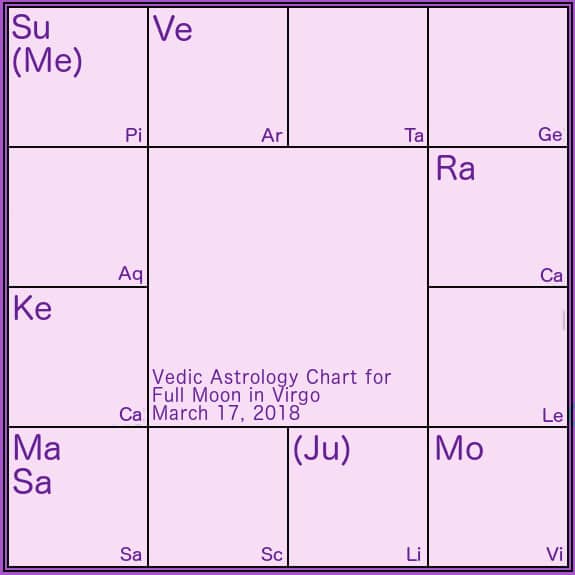
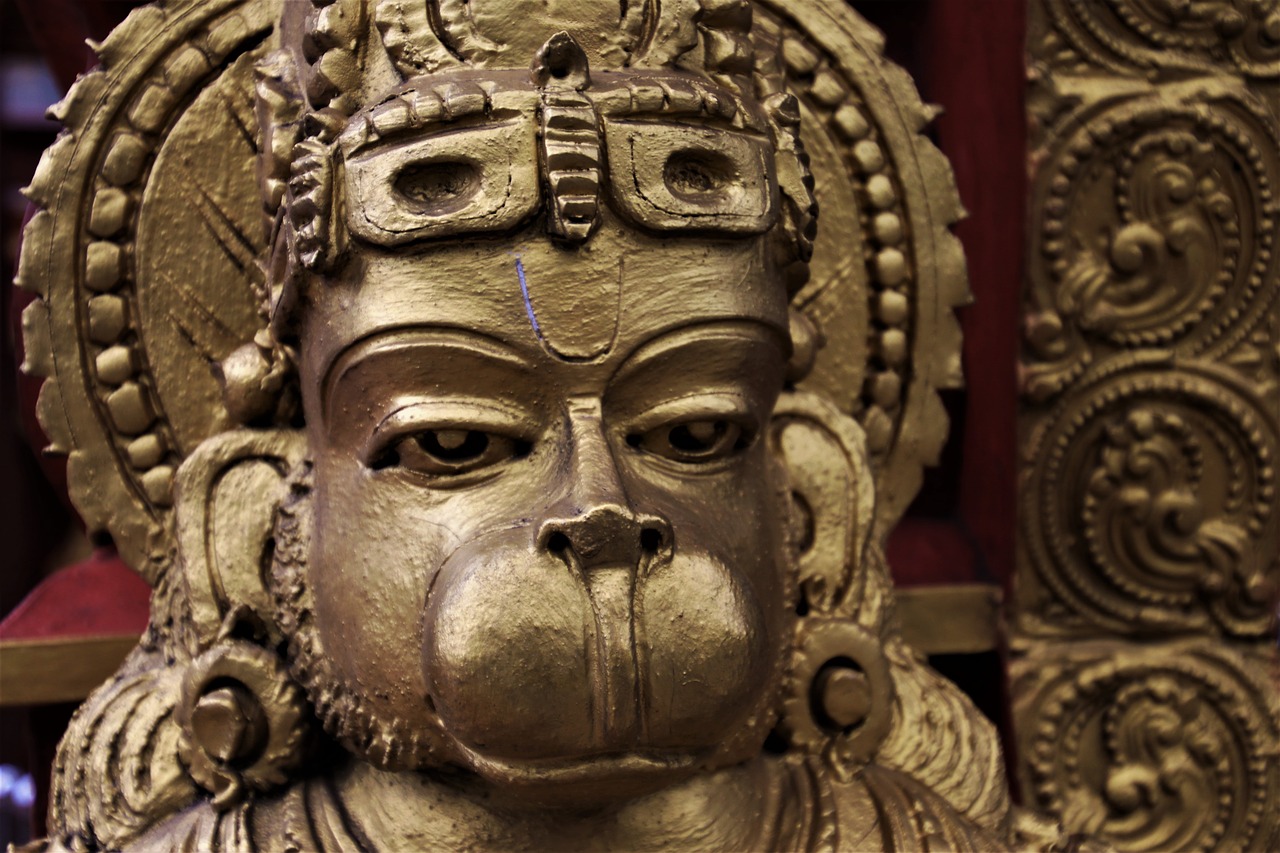 Hanuman Jayanti (and other holidays)
Hanuman Jayanti (and other holidays)
The purnima Full Moon phase this month indicates Hanuman Jayanti in the Hindu festival calendar, the celebration of the birth of Lord Hanuman. Hanuman embodies the highest form of devotion, and shows us the incredible strength that emerges from within when we practice great faith, humility, and service. In addition to traditional pujas (prayer ceremony), you can chant, sing, meditate, and especially, find some way to be of service, in order to honor Hanuman on this full Moon. The most fitting mantra/song is the Hanuman Chaleesa.
Marked by the first full Moon after the spring Equinox, this full moon marks the weekend for Easter and Passover as well, which are also determined by the lunar calendar.
Jai Jai Jai Hanuman!
And in case you missed it, Jupiter is now retrograde, and your sign’s free forecast is available HERE.
Be sure to follow me and join the mailing list to stay up-to-date with Vedic astrology news and offers!

by Somya Devi | Feb 12, 2018 | Astrology, Conjunctions, Eclipses, Holy Days
The planetary energy is all focused around Aquarius right now, as Sun and Moon join both Venus and Mercury there on Wednesday night, a dark Moon night that will bring in a new lunar cycle as well as a partial solar eclipse. The three outer planets, Mars, Jupiter, and Saturn, all cast their gazes on this eclipse through their respective aspects onto Aquarius. The nodes, Rahu and Ketu, influence this New Moon via their eclipsing affect (though they are still transiting the Cancer-Capricorn axis).
The exact time of the New Moon in Aquarius will be at 1:05 pm PST, on Thursday, February 15th. The Moon and Sun will converge in Dhanishta nakshatra at this time, which is the sign of “the wealthy,” showing us our potential to thrive in life, and also associated with music and the steady beat of the cosmic drum. A partial solar eclipse occurs simultaneously, though mostly visible only from Antarctica, from 10:55 am to 2:47 pm PST (18:55 to 22:47 UT), peaking at 12:51 pm PST (20:51 UT).

Aquarius Cycle
With so much energy converging around Aquarius, this eclipse and the coming month will draw our focus towards something larger than ourselves—the greater good, and our potential to create thriving communities around us. Aquarius is ruled by the planet Saturn, who makes us think about the long-term, the bigger picture, and the commitments and hard work that are needed to take us to our goals. As the active, yang, or masculine expression of Saturn, Aquarius is where we are willing to move our efforts outwards, towards long-term goals that affect the world around us. Under an Aquarian mindset we become willing to work for social equality, planetary and even universal harmony. Community values become more important than the individual, and we find ourselves happy to become part of and of service to a greater cause.
Dhanishta
Under Dhanishta nakshatra, the Vedic constellation within Aquarius where this New Moon occurs, we strive to step into beat with the cosmic rhythm. The symbol for this nakshatra, “the wealthiest,” is the drum, often associated with the damaru (hand-drum) of Nataraj, Shiva in the form of the cosmic dancer. There is a universal rhythm that plays through, behind, and around our existence, that goes beyond our individual desire to forge our own path and dance to the beat of our own drum, as they say. When we desire to come into alignment with the cosmic rhythm, and surrender to the greater divine pulse that calls from within, we may actually find ourselves happier than when we were attempting to harness power through a more narrow vision.
Five Planets Influencing
With Venus and Mercury joining in Aquarius, our desires and intellect may also more easily align with this broader vision. Mars, Jupiter, and Saturn are also all casting their drishti (“glance,” or aspect) on Aquarius, and the Sun, Moon, Mercury and Venus. This is due to the special aspects that these planets cast according to Jyotish, different from those in Western astrology. Saturn aspects the third house from himself (and the tenth), Mars the fourth (and the eighth), and Jupiter the fifth (and the ninth). With their influence, our actions, principles, and committed nature are also all aimed at the Aquarian concepts of universal duty, connection, and service.
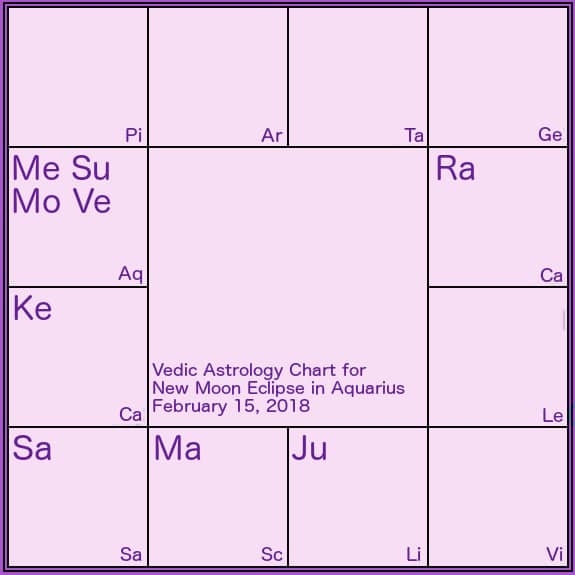
Eclipse
Although the nodes are aligned with Cancer and Capricorn, and this New Moon occurs in Aquarius, Ketu is close enough to the Sun and Moon now that it will cause a partial solar eclipse on Thursday. Although this eclipse may not seem as dramatic as the recent ones that were visible in their totality, it will nevertheless stir the shadow energy of the nodes, and compel us to do some work on ourselves and our lives, or else feel the disturbing effects that eclipses can bring.
With the Sun being eclipsed in Aquarius and Dhanishta, we may feel extremely cut off from our individual power, which can really highlight our human need for community support, and service. When we realize that “I” the individual is not able to solve all our problems, or that personal gain means little without friends to share it with, our place as part of a larger network begins to seem more important. You may also feel cut off from whatever in life is represented by Aquarius in your individual natal chart (or by any planets there), or may have some difficulty (urging you towards transformation) in that area of life. (Free Eclipse Forecast for those on my free mailing list).
This eclipse may show us where we have been neglecting community engagement, public service, or social networking, and if we aren’t willing to look at that, the lessons of the eclipse could be painful. Whether this is a new realization, or even if social involvement is already a large part of your life, this eclipse could be revelatory and transformational, showing you (and your friends) some innovative ways to take your community vision to the next level.
Maha Shivaratri
Tuesday night, the night before the Dark Moon night, is a prime time to dig deep and lay the groundwork for some deep insights and personal growth following Thursday’s eclipse. Tuesday brings Maha Shivaratri, the “great night of Lord Shiva,” in Hindu tradition. It falls on the 14th phase of the waning Moon this month (check here for your local time), and is perhaps the most auspicious night of the year for doing sadhana (spiritual practice). It is traditional on this night to stay up all night fasting, chanting, praying, and meditating.
This holiday honors Lord Shiva, the great ascetic, and particularly two stories of great sacrifices that were made protect the entire creation. One of these comes from the story of the churning of the milk ocean, which the gods and demons were doing in order to release the nectar of immortality. Before the nectar came up, however, a poison came up first. (This is similar to when we do spiritual practice and begin our path of self-inquiry, and negative tendencies often come to light first, which can be a painful experience. Similarly, during a physical fast or cleanse, toxins can be shaken loose and released first, causing a healing crisis before we continue healing into a freer, happier state of being.) When the poison came up from the milk ocean, Lord Shiva consumed it so that it would not engulf humanity, the first story of great sacrifice. His wife, Parvati, held his throat however, so that he could not ingest it, thus saving him in turn.
 Maha Shivaratri also commemorates the wedding of Shiva and Parvati, which also stemmed from great sacrifice made for the benefit of all humanity. It was said that after his first wife, Sati, perished, Shiva was fully devoted only to his sadhana, meditating for aeons in isolation and renouncing the world. Then the demon Tarakasura began running amock on earth, threatening all of humanity. Brahma fortold that only Shiva’s child could defeat Tarakasura, so the gods devised a plan for Sati to reincarnate as Parvati, and win over her Lord to marriage once again. He was not easily swayed, however, and it was only after Parvati became an ascetic and underwent great penance that he agreed to marry.
Maha Shivaratri also commemorates the wedding of Shiva and Parvati, which also stemmed from great sacrifice made for the benefit of all humanity. It was said that after his first wife, Sati, perished, Shiva was fully devoted only to his sadhana, meditating for aeons in isolation and renouncing the world. Then the demon Tarakasura began running amock on earth, threatening all of humanity. Brahma fortold that only Shiva’s child could defeat Tarakasura, so the gods devised a plan for Sati to reincarnate as Parvati, and win over her Lord to marriage once again. He was not easily swayed, however, and it was only after Parvati became an ascetic and underwent great penance that he agreed to marry.
Thus, this holiday is celebrated through the penance of fasting, forgoing food, water, and sleep, for one night, and simultaneously celebrating the union of Lord Shiva and Parvati, or the masculine and feminine energies of creation, that allows this dance of life to continue. It is an apt time to feel the forces of Aquarius upon us, which compel us to consider our role in society, and in the universe, and what personal sacrifices we can make for the greater good. Even if you’re not able to stay up the whole night, any amount of devotional practice, serviceful sacrifice, or chanting of Om Namah Shivaya on this night can have beneficial affects that are magnified greater than on any other night.
Personal readings and Eclipse readings available here.


 Holi
Holi






 Vishakha
Vishakha Dhanteras
Dhanteras










